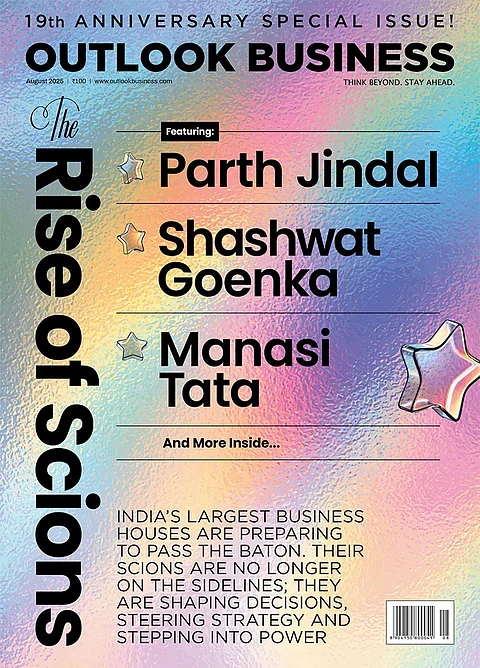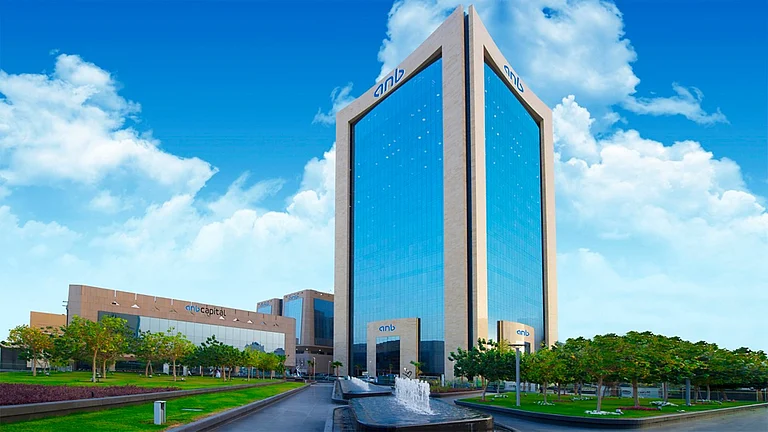Since he joined Hindustan Aeronautics Ltd (HAL) as the finance head of the helicopter division in 2004, CMA C.B. Ananthakrishnan was involved in several seminal Make-in-India projects. In the beginning, the state-owned PSU faced challenges in the early stages of the production of Advanced Light Helicopter (ALH). It was one of the first state-of-the-art platforms that was being designed, developed, and produced indigenously. There were challenges related to supply chain, especially after international sanctions were imposed on India after the 1998 nuclear tests. “I led the multi-disciplinary team to actively engage with foreign suppliers, and OEMs, to ensure essential supplies for seamless progress of the proposed ALH,” he remembers.
Later, the Light Combat Aircraft (LCA), a single-engine, Compound-Delta Wing, tailless plane, was designed and developed by several partners such as HAL, DRDO, CSIR, BEL, and IAF. It is the smallest and lightest multi-role supersonic fighter aircraft of its class in the Air Force. “Considering the stringent timeline, HAL proactively commenced design and development, using internal funds. The specs were finalized, and inhouse development of some systems were initiated. After final tests, the delivery will happen this year,” says Ananthakrishnan. HAL procured radar from an Israeli firm, and advanced short-range air-to-air missiles with an OEM.

Following the Kargil conflict, the Air Force recognized the critical need for a robust armed helicopter platform capable of delivering precise strikes at high altitudes. In October 2006, HAL began to design and develop the Light Combat Helicopter (LCH). Extensive flight testing was conducted to evaluate performance, handling characteristics, and system functionality across altitudes. The LCH demonstrated its unique capability to land and take off at altitudes of up to 5,000 meters (16,400 feet) while carrying significant weapon payloads and fuel loads, fulfilling the precise needs of the Armed Forces. LCH stands poised for series production, with successful production of 15 helicopters, ahead of contractual schedule.
Such massive indigenization programs have defined the tenure of CMA Ananthakrishnan, who now dons the combined roles of CMD (Addl.Charge), Director (Finance), & CFO. But it is not enough to design innovative and unique products. One needs to market and sell them, and boost order book in a bid to improve the topline and bottom line. In the case of ALH, for instance, the initial orders were minimal. “In December 2007, with persistent efforts, HAL persuaded the Air Force and Army to place orders for 159 helicopters, with a total value of Rs 14,000 crore, which was the largest-ever order for an indigenous platform given to an Indian firm,” explains Ananthakrishnan. He concluded one of the first export orders with Ecuador – a global contract against global competition that put HAL’s product in the global market.

After he became Director (Finance), CMA Ananthakrishnan bolstered the order book position. The 83 LCA contract (Rs 36,000 crore) was signed after long negotiations. Between 2018 and 2024, orders aggregating Rs 1,70,000 crores were inked. They improved the order book position to Rs 94,000 crore, despite liquidation of orders of Rs 1,42,000 crore during this period. At present, HAL has huge deals that are in the pipeline for various engines, ALHs, LCAs, and Su-30s. “They are estimated at Rs 2,60,000 crore, which will allow HAL to have a clear visibility for order execution for the next 8-10 years with a targeted double-digit growth in revenues,” predicts Ananthakrishnan.
Today, HAL is in the process of indigenizing all its platforms and systems. This indicates a shift from Transfer-of-Technology mindset to leap towards self reliance – imports as percentage of annual revenues slumped from 39% in 2018-19 to 23% in 2022-23. A major reason is the shift in project management approach towards proactive planning and execution to reduce cycle times, and accelerate deliveries. The CMA claims that supplies under 15 LCH contracts were delivered in February 2024, ahead of the scheduled July 2024. He expects that the supplies of 25 ALH, and 80 RD-33 engines, which were cleared in March 2024, to be ahead of contractual schedules.
Ambitious plans to design, develop, and deliver localized products require funds. In 2018, HAL, till then 100% owned by the government, listed on the bourses after an IPO. The prospectus required details related to land records, and ongoing legal cases. HAL had to convince investors and merchant bankers on how it could manage the business risks. “The narrative during the IPO roadshows was to highlight HAL’s capabilities, and showcase the company as a one-stop solution for defence and aerospace segments. The investors were asked to invest in Asia’s largest aerospace company,” says Ananthakrishnan.

After listing, the stock behaved listlessly. In March 2020, during the height of the pandemic, the price hit a low of Rs 427 (Rs 10 face value). Analysts told the company that the investors were aware of HAL’s business cycles, and order-flow patterns. At the time of listing, the order book position was Rs 60,000 crore, which did not enthuse buyers, who were extremely skeptical about the future of the company. Since HAL was a defence PSU, with majority holding by the government, there was minimal information about its operations and businesses. In early 2020, most listed PSUs were undervalued, and priced low.
It was at this stage that HAL’s management, led by Ananthakrishnan, emphasized the uniqueness and potential of the company’s order book. The former told the investors that the least-appreciated, and little-known ROH (Repair and Overhaul) segment of the business comprised 50-60% of the annual revenues. This was income that accrued automatically and regularly without any major efforts. This was the mainstay of the topline – the bread-and-butter operations. This was coupled with “consistent performance and delivering in-line/excess to the (performance) guidance” given to the investors. It improved the investors’ confidence. On 31st May, 2024, the stock was quoted at more than Rs 4,800 (with Rs. 5 face value), or more than 20 times the price in March 2020, with a market capitalization of more than Rs 3,40,000 crore.












 Just one email a week
Just one email a week